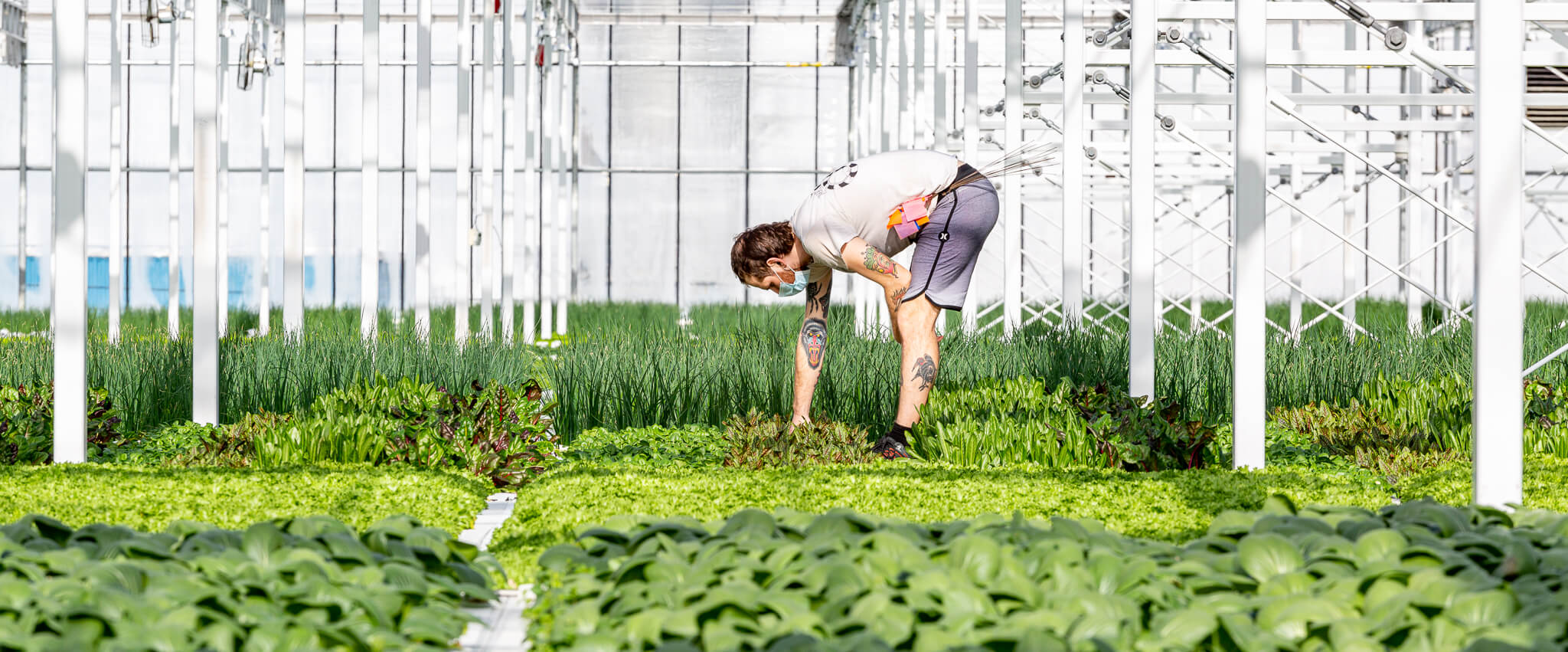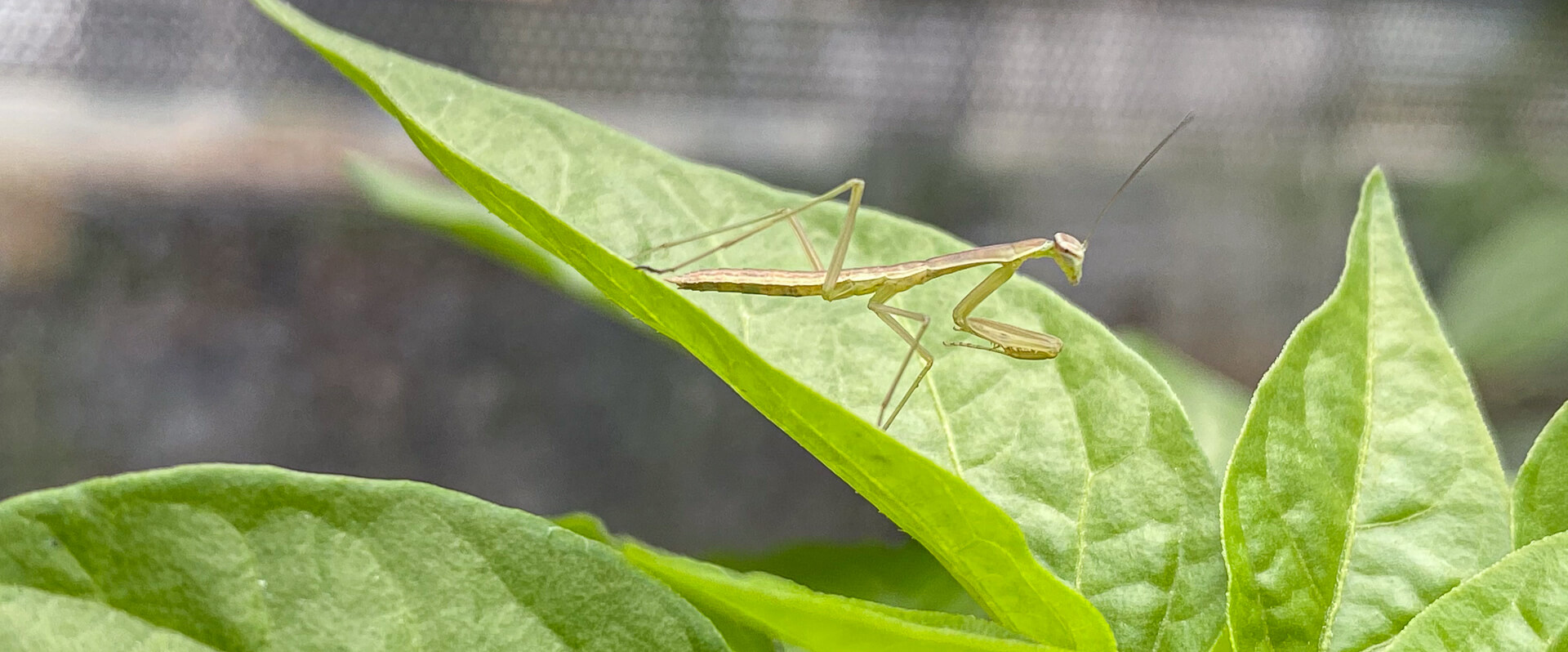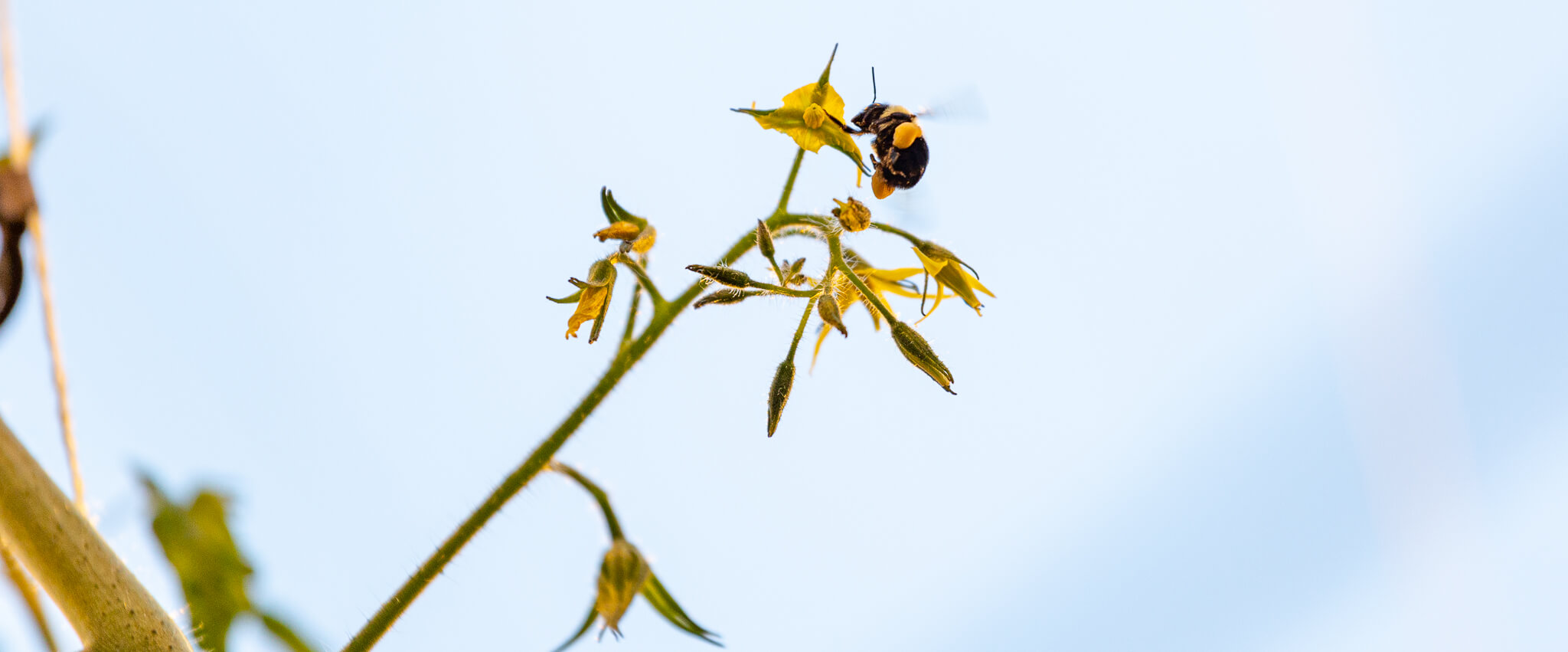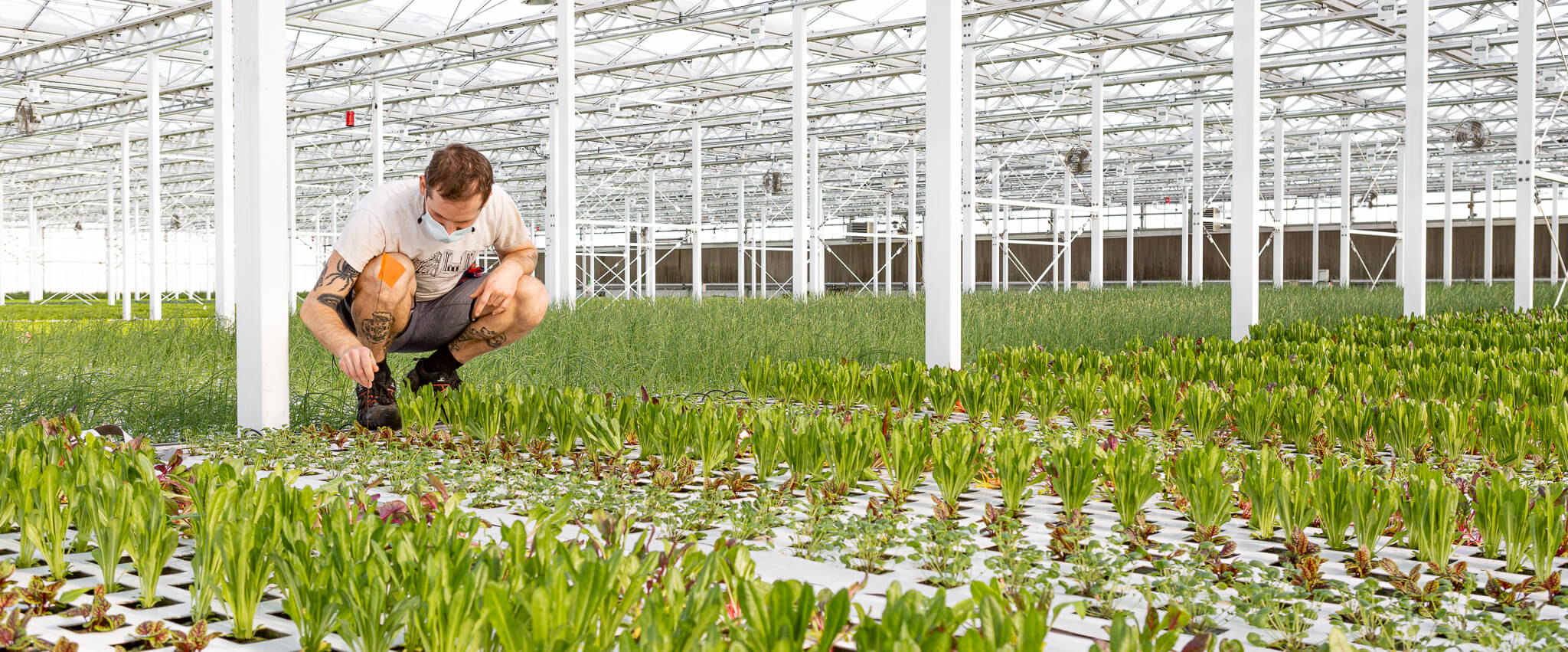Biocontrols: How to control pests responsibly.

The use of biocontrols is one of our five tenets of responsible agriculture. Like us, plants suffer from bacteria, viruses, and insects that can damage or wipe out entire crops. On our rooftops, we never use synthetic pesticides - instead, we turn to biocontrols, but you may be wondering…what are they? Biocontrols are beneficial insects that act as natural predators for pests. They include praying mantises that eat every last bug in their vicinity and parasitic wasps, who have a horror-movie-like approach, laying their eggs in aphids (our number one enemy), eventually hatching and devouring their host. When our hawk-eyed greenhouse teams notice pesky pests, they release the appropriate beneficial bug to fight them off.
Biological pest control requires a ton of trial and error. That’s why our team loves what they do - no day is like the next because every problem has a unique solution. Keep scrolling for a glimpse of what sustainable biocontrols look like in our rooftop greenhouses.
 Aphids, the most common pest in our greenhouses, feed on the sap of plants, ultimately killing them. To keep them at bay, we use parasitic wasps - a microscopic insect that lays its eggs inside them, eliminating up to 100 a day. The aphids pictured above have been duly “mummified.”
Aphids, the most common pest in our greenhouses, feed on the sap of plants, ultimately killing them. To keep them at bay, we use parasitic wasps - a microscopic insect that lays its eggs inside them, eliminating up to 100 a day. The aphids pictured above have been duly “mummified.”
 The use of parasitic wasps is a constant balancing act. The key is to have a population big enough to get rid of the aphids, but they’re so efficient that if too many are released, they’ll run out of food and starve. To prevent this, we’ve introduced a type of aphid that only feeds on wheatgrass to become food for the wasps without threatening the health of our crops, also known as a banker plant setup.
The use of parasitic wasps is a constant balancing act. The key is to have a population big enough to get rid of the aphids, but they’re so efficient that if too many are released, they’ll run out of food and starve. To prevent this, we’ve introduced a type of aphid that only feeds on wheatgrass to become food for the wasps without threatening the health of our crops, also known as a banker plant setup.
 Spotted here is a mega predator, the praying mantis. Although they don't always know the difference between harmful and beneficial insects, they’re effective (and hungry) - waiting for their prey and moving from area to area, devouring everything in their path.
Spotted here is a mega predator, the praying mantis. Although they don't always know the difference between harmful and beneficial insects, they’re effective (and hungry) - waiting for their prey and moving from area to area, devouring everything in their path.
 In our Anjou and Ahuntsic greenhouses, we grow our microgreens and seedlings on trays filled with water...and lots of water means lots of gnats. Although stray spiders help out where they can, we’ve found these sticky yellow strips are the most effective!
In our Anjou and Ahuntsic greenhouses, we grow our microgreens and seedlings on trays filled with water...and lots of water means lots of gnats. Although stray spiders help out where they can, we’ve found these sticky yellow strips are the most effective!
 Even if they're not exactly biocontrols, bumblebees play a vital role in our crops. We need pollinators to help our greenhouses thrive, and since they can’t access the greenhouse freely, we introduce small hives throughout our rooftops. Although they don't produce honey, they’re pretty docile and make great teammates.
Even if they're not exactly biocontrols, bumblebees play a vital role in our crops. We need pollinators to help our greenhouses thrive, and since they can’t access the greenhouse freely, we introduce small hives throughout our rooftops. Although they don't produce honey, they’re pretty docile and make great teammates.
 And when all else fails, our greenhouse team takes over. Plant by plant, our team searches for harmful insects - flagging and removing infested veg.
And when all else fails, our greenhouse team takes over. Plant by plant, our team searches for harmful insects - flagging and removing infested veg.
